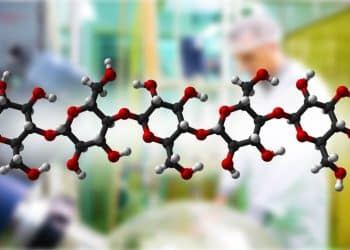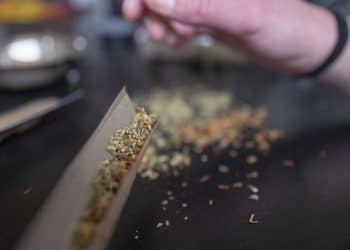Cannabis is a strong plant capable of growing well in different kinds of growing media and conditions, potentially producing high yields of flowers rich in valuable secondary metabolites such as tetrahydrocannabinol (THC) and cannabidiol (CBD) among others.
Depending if the plant is grown for medical purposes (medical grade cannabis) or for its high fiber content (hemp), the ideal growing environment can change
However, one interesting trait that characterizes cannabis plants in general is their ability to absorb heavy metals and toxic substances from the soil.
The best soil for cannabis plants
Generally, for an optimal production, cannabis plants establishment requires:
- Aa well drained soil;
- With adequate moisture;
- In good balance between water-logging and drought.
To minimize the risks, a suitable growing media should be then consistently supported with well balanced physical and chemical properties. The elements worth focusing on include:
Ample pore space, which is crucial to ensure air flow and avoid the risk of root pathogens and fast draining with moderate water retention during the irrigations;
And a pH level between 6.0 and 7.5.
Depending on the cultivation purposes and if the cannabis is cultivated outdoors directly in the ground or indoor in the pots, the soil will vary in composition. In general, however,the substrates needs to be light, highly porous, well aerated, rich of nutrients and free of pathogens.
Fertile prairie soils with high organic matter content are best suited to maximize hemp production.
It should be noticed that hemp doesn’t grow well in soils particularly rich in clay because they tend to be too compact and humid. Nevertheless, slightly clay soils are better than peaty-sand soils for the increased stem yields production.
In the case of medical grade cannabis cultivated indoors, the growing media often vary depending if the plant is in the germination, vegetative or flowering stage.
The best medium for the initial propagation stage should allow roots to easily penetrate the soil and rapidly establish in full form.
Depending on the composition there are various kinds of germination substrates:
- Rockwool cubes;
- Peat-based substrate;
- Coir-based media.
For the vegetative and flowering stages peat-based mixes, coir-based mixes, coir blocks, and preformed rockwool among others can be used: what will change during these cannabis development stages will be the fertilization nutrients mix added to the plants.
Essential Nutrients
Proper supply of mineral nutrients is at the base of a healthy and prosperous crop. The two ways for a plant to obtain essential elements are air and soil. Interestingly, the two are not interchangeable. From the air and the water plants obtain:
- Carbon;
- Oxygen;
- And hydrogen.
From the soil, the most important macronutrients plants need are:
- Phosphorus;
- Nitrogen;
- And potassium.
These elements, in combination with soil salinity, play a crucial role in the plant’s metabolism. The same aspects are responsible for the formation of the secondary metabolites including the terpenes, flavonoid profiles, and the cannabinoids production.
Aside from the essentials, the yield can be affected by secondary macronutrients. The list is not limited to, but includes:
- Calcium (Ca);
- Magnesium (Mg);
- Sulphur (S);
- Zinc (Zn);
- Manganese (Mn);
- Iron (Fe);
- Copper (Cu);
- Molybdenum (Mo);
- And chlorine (Cl).
Each of these elements play a crucial role in the development of a healthy cannabis plant. The deficiencies in just one of them can cause serious problems, including the incurrence of pathogens, loss of foliage, slow or failed growth, low yields and quality of the inflorescences, low levels of secondary metabolites etc.
The Importance of Fertilization Studies
Fertility studies on hemp crops started in US during the second World War. Initial goals were to determine fertilization rates and increase fiber production for army needs, specifically textiles and ropes.
Today there is still a lack of peer-reviewed studies regarding this argument and there is still a wide variety of recommendations regarding the right amount of macro- and micronutrients to add to cannabis crops depending on the phenotypes, the final products and the cultivation conditions.
While the role of minerals in growth cycle has largely been defined, the effects of nutritional supplementation are better understood. `As an example, a nutritional supplement humic acid (HA) can reduce the spatial variation of cannabinoids distribution throughout the cannabis plant. This compound is involved in the increased production of secondary metabolites and it is capable of improving the physical and chemical properties of the soil, increasing the vital moisture and the primary nutrient uptake.
This is, however, just one example. Today we need phytochemical analysis to be a more frequent part of the fertilization studies in order to characterize the plant’s response to variations in nutrient supply. Moreover, for plants in outdoor cultivation, the fertilization studies should take into consideration the environmental conditions for a specific geographic area.
It should be noticed that fertilization and supplements could be a potential risk for the introduction of chemical and microbial contamination in the final cannabis products. For this reason in particular, comprehensive care should be taken into account when adding fertilizers in order to ensure a production of a safe crop.
Benefits of Cannabis Crops to the soil
Cannabis has the capability to clean contaminated soils through a process called phytoremediation.
Cannabis roots are able to absorb harmful chemicals, such as heavy metals from the soil, storing them into leaves, stalks and stems.
The fast growth of hemp fiber crops and the ability of the genotype to bio-accumulate contaminants were tested in the past in large areas of agricultural lands. Cannabis was proven to “clean” contaminated soil from dangerous metals, such as:ead, cadmium, mercury, nickel and chromium.
Of course, cannabis is not the only option. Traditional methods to recover polluted soil include:
Excavation;
Chemical stabilization;
Incineration;
Vitrification;
nd soil washing.
These widely used methods can be successful, but far from perfect.
First of all, all of them are extremely expensive, especially if a particularly large plot of land is contaminated.
Secondly, these methods could potentially introduce secondary pollutants that could induce irreversible changes in the treated areas.
Phytotechnologies are considered more safe, economic and environmentally sustainable compared to the aforementioned methods.
As for practical implementation, industrial hemp, together with other plants (such as sunflowers and cotton) have been already used in the 1990s. Specifically — to eliminate highly toxic strontium and radioactive cesium accumulated in the soil after the nuclear disaster at Chernobyl.
Bio-accumulative capacity depends on the cannabis strain, and more studies are needed to highlight the best varieties.
Sustainability in Hemp Use
Hemp crops are used in a circular economy to clean polluted areas and produce paper, textiles, composites, and biofuel.
The use of hemp in raw, modified or carbon forms has been proposed as an effective adsorbent in aqueous solutions.
The Drawbacks and Reuse Problems
The drawback of cannabis bio-accumulation capability is that also varieties used for medicinal purposes and to produce derivatives for food and nutraceutical industries could potentially contain harmful chemicals extracted from the soil.
It’s vital to perform constant analyses on the cultivated areas and to avoid the production of cannabis inflorescences in areas with high amounts of heavy metals.
The plant is also used to treat cancer patients with chronic pain and nausea, stimulate appetite, and reduce environmental toxins. However, consumers are exposed to toxic compounds and their effects can be adverse.
In fact heavy metals accumulate in specific body areas and, among other processes, they harm the human body through the formation of reactive oxygen species and free radicals which can damage proteins, lipids, nucleic acids and enzymes, inducing cancer and neurological problems.In addition to heavy metals, cannabis plants also tend to accumulate pesticides. For this reason it is always important to consume cannabis derived products tested for contaminants.
More studies are needed to assess methods to reduce cannabis bio-accumulation in case of crops intended for medical purposes.












